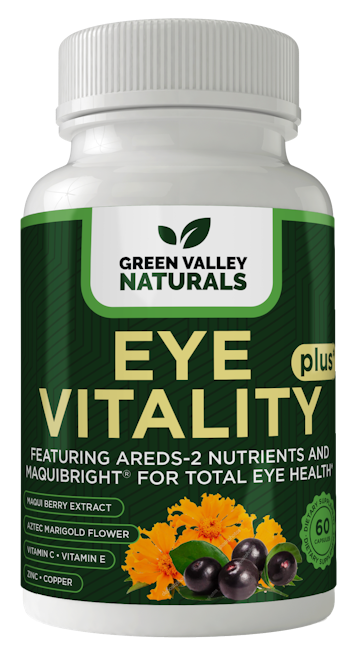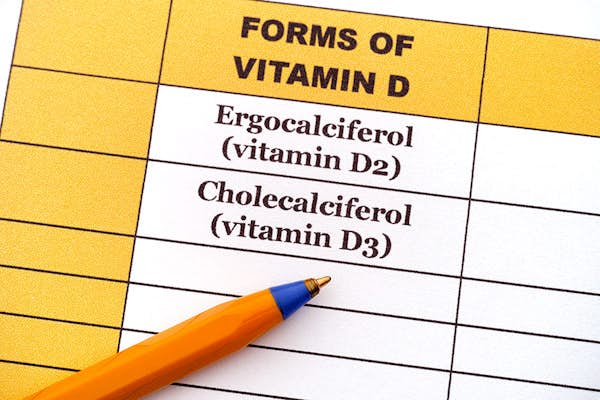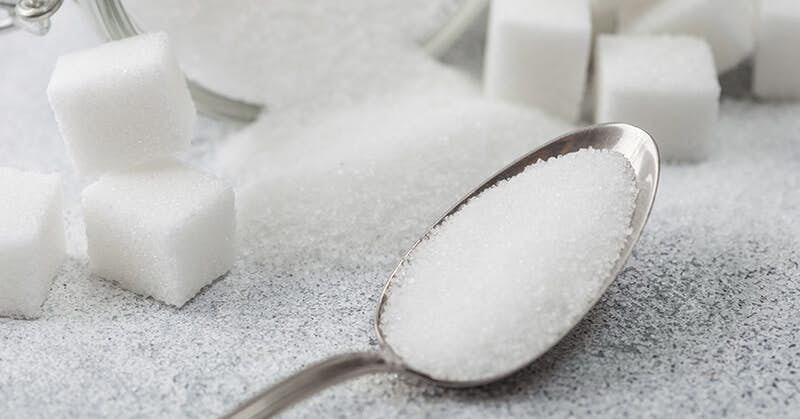
Volume 1: Issue #3
The prognosis was not good.
Norah Norton would lose much of her sight. Her failing vision forced her to quit her beloved job as an art curator. She gave up driving. She stopped gardening. Reading became too exhausting to engage in. Her quality of life fell dramatically.
"I was devastated, and my immediate thought was that I didn't want to become a burden to my two children."
Norah was diagnosed with a degenerative condition called age-related macular degeneration (ARMD).
It's the most common cause of sight loss for those over 50.
But Norah was lucky. She heard an eye specialist speaking on the radio. He was from the Waterford Institute of Technology (WIT) in Ireland, where she lived. Here, some of the world's most advanced and ground-breaking research is conducted into ARMD.
The doctor on the radio said that three dietary ingredients could slow down, stop and even reverse the condition for many people.
Norah wasted no time in taking the specialist's advice. She took the three nutrients he mentioned in the form of a supplement. Four years later, her sight is virtually back to normal. She has returned to work, drives her car and enjoys her hobbies again.
"On both the work and domestic fronts, I'm back on track." she said. Keep reading to find out what she took. . .
Affects 15 million Americans & set to grow rapidly
The macula is a tiny area near the center of the retina that allows us to have sharp central vision. It has a high concentration of photoreceptor cells that detect light, and it consumes high amounts of oxygen. These factors make it vulnerable to damage by free radicals.
Free radicals can thin and break down macular tissue. When this happens, vision may be distorted in the early stages of ARMD in one or more ways.
- straight lines appear wavy
- faces look misshapen
- colors fade
- lights glare
- contrast sensitivity is impaired
- fine detail gets lost
These symptoms may progress until the victims totally lose vision in the center of their eye. The number of Americans already affected is around 15 million. Because of the aging population this is expected to double over the next decade or so.
Unfortunately, most people take their eyesight for granted.
Professor John Nolan, principal investigator from WIT, puts it this way: "People never believe they're actually going to lose their vision. But it's something that's a real possibility."
Protect your eyes with carotenoids
Fortunately there's something we can all do to maintain good macular health even as we age.
There are four established risk factors for ARMD. These are age, family history, smoking and diet.
There's nothing you can do about the first two, but you can certainly abandon smoking and improve your diet.
Here’s what you need to do regarding food intake. . .
The macula contains a yellow pigment. This macular pigment (MP) filters out high energy blue wavelength light before it hits the photoreceptors, thereby preventing damage and improving visibility.
But the density of this pigment drops with age. As it does so, its protective ability declines. The key to macular health lies in maintaining MP.
Out of the 50 carotenoids (plant pigments) found in food, only three make up the MP or macular pigment. These are lutein, zeaxanthin and meso-zeaxanthin.
The first two are obtained from eating leafy green vegetables and colorful fruits. Good sources are spinach, kale, collard greens, corn, zucchini, squash, orange peppers, kiwi fruit, grapes, orange juice and egg yolk.
Professor Jim Stringham, a lutein specialist from the University of Georgia, says you need at least 10 mg of lutein a day to maintain MP and eye health; that's like eating two large bowls of spinach. The professor has found, not surprisingly, that most of the people he's tested are deficient.
So while it's possible to get a high amount of these carotenoids from food sources alone, it's very hard to do in practice.
The most potent protector - meso-zeaxanthin
MP density peaks in the center of the macula and then declines with increasing distance from it.
Meso-zeaxanthin – one of those three vital plant pigments -- is only located in the center. It has the highest antioxidant potential of the three carotenoids, because the center of the macula has the highest metabolic rate and the greatest potential for free radical damage.
That points to meso-zeaxanthin as the most important pigment for macula protection.
It's always been assumed the body can make all the meso-zeaxanthin it needs from lutein. However recent research from WIT found that some people have a central dip in MP, i.e. they are deficient in meso-zeaxanthin. This greatly increases their risk of age-related macular degeneration.
The researchers believe such people lack the enzyme needed to convert lutein to meso-zeaxanthin.
Meso-zeaxanthin has only been found in small amounts in fish skins. It doesn’t occur naturally in any other food, as far as researchers know, so relying on the diet to provide it is out of the question. When the WIT researchers provided a supplement containing meso-zeaxanthin to those with central dip, MP was rebuilt and vision enhanced.
Other research carried out at WIT demonstrates that supplementing with all three carotenoids gives a better outcome than supplementing with lutein and zeaxanthin alone.
According to professor Nolan, "supplementation [is] key. At 60 you are at high risk of developing macular degeneration and losing central vision, so we have to optimize nutrition."
Best regards,

Lee Euler,
Publisher



